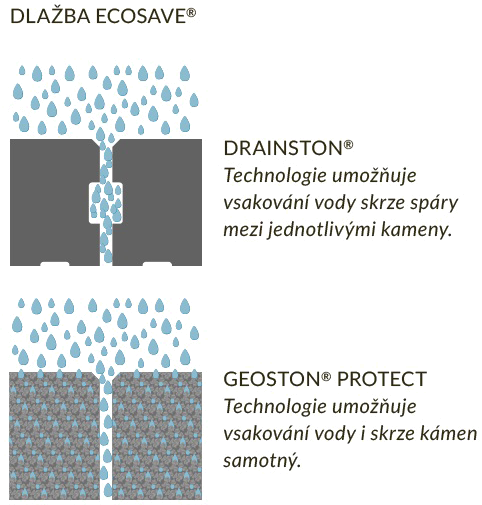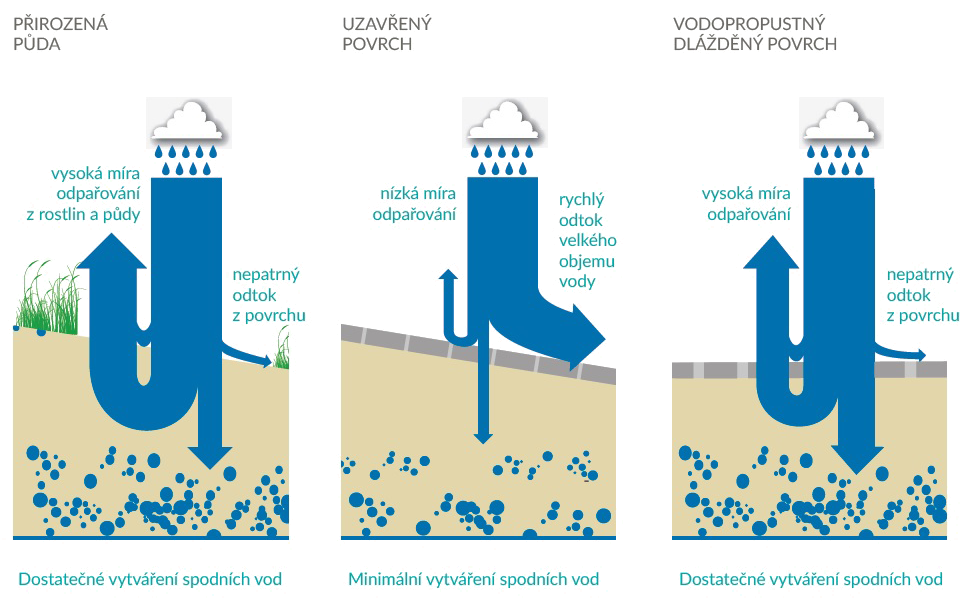
Thanks to concrete, water can be returned to the landscape
 |
The German company Godelmann, which boasts a 70-year tradition, is characterized by high-quality products made of concrete. This is not just about fences, stairs, and pavements, but also design items such as flower pots or concrete jewelry. Now, this company, in collaboration with the globally recognized expert in its field, Prof. Dr.-Ing. Carsten Dierkes, has developed a completely unique material that responds to the current environmental situation and could represent a revolution in construction – but only if people are able to fully recognize the benefits of decentralized infiltration and architects and designers are not too skeptical of new technologies.
High Infiltration and Cleaning Capacity
 |
Another huge advantage of this material is its cleaning ability, specifically its capacity to remove dust, oil products, heavy metals, and other pollutants from water. This is ensured by a combination of ecological paving, jointing, and special bedding material. Due to this property, these permeable pavements can also be used for strengthening parking and driving surfaces without the worry that unwanted substances escaping from vehicles could contaminate groundwater, thus endangering drinking water sources.


Seeing It with One's Own Eyes
It is the end of August, a sunny morning. We find ourselves in Brieselang, an area located a few kilometers west of Berlin. A fire engine stands on the access road between several family homes, and journalists, planners, and architects have gathered here, as well as members of the public. Among the crowd is one of the prominent contemporary Berlin architects, for whom the much-anticipated presentation will soon take place. Its aim is to demonstrate the claimed properties of this material in practice, as the mentioned architect wished to see its functioning with her own eyes. In a little while, 1500 liters of water will be poured onto the designated area of permeable paving (bounded by a wooden rectangular structure), which we are currently standing on and which was implemented here five years ago by Godelmann. This amount, which will cause the water level to rise to a height of ten centimeters, is intended to simulate the largest rainfall event in this locality in the last hundred years, when 90 liters of precipitation fell on a square meter within 24 hours.


Within twenty-two minutes, the water disappears. It infiltrated even faster than the small volume that escaped to the adjacent lawn and remained in the form of a small puddle long after the water in the wooden structure was gone. If ordinary paving or asphalt had been used to strengthen this road, the water would have flowed off the surface into the sewer and from there into the river, which would increase the risk of flooding during heavy rains, in addition to the drying out of groundwater (because the flowing water does not have time to infiltrate or evaporate). This is, however, the current state of water in the landscape, which results from the growing development and the strengthening of surfaces with impermeable materials.
 |
Construction with Subsidy Options
The ECOSAVE® system, which has been tested at the German Institute for Structural Engineering (DIBt), where it was approved and received the necessary certification, has been used in recent years for the implementation of several foreign projects. These include parking lots at the SPA Sanssouci in Potsdam and the parking area for Union Berlin in Berlin. This paving should also appear soon in our country, specifically in the parking lots of Lidl supermarkets. The functionality of the pavements, which are available in various formats and colors, is approximately 10 to 15 years, after which the joints need to be cleaned using a special device (for instance, from moss and other impurities) to restore their infiltration capacity. Nevertheless, the costs associated with permeable pavements are lower than those of impermeable ones, as they are reduced by the fee for discharging rainwater into public sewers and treatment plants (not to mention the costs associated with dealing with flood conditions), and additionally, subsidies of 50 to 85 percent are provided to cities and municipalities for these pavements.




Text: Kristýna Brožová
Photography: company archive
Contact:
Godelmann CZ, s. r. o.
Pod Vinicemi 931/2, 301 00 Plzeň
www.godelmann.cz
The English translation is powered by AI tool. Switch to Czech to view the original text source.
1 comment
add comment
Subject
Author
Date
překlad z němčiny
Josef Strubl
23.01.20 10:56
show all comments







